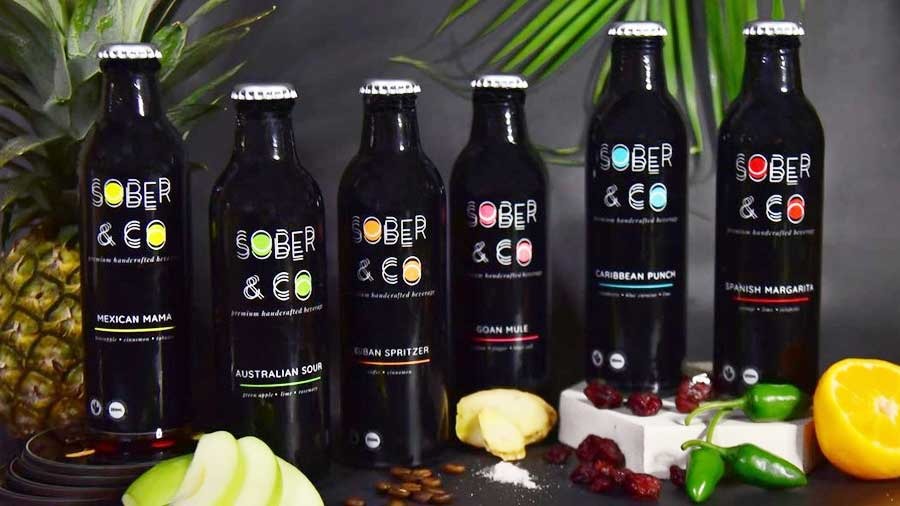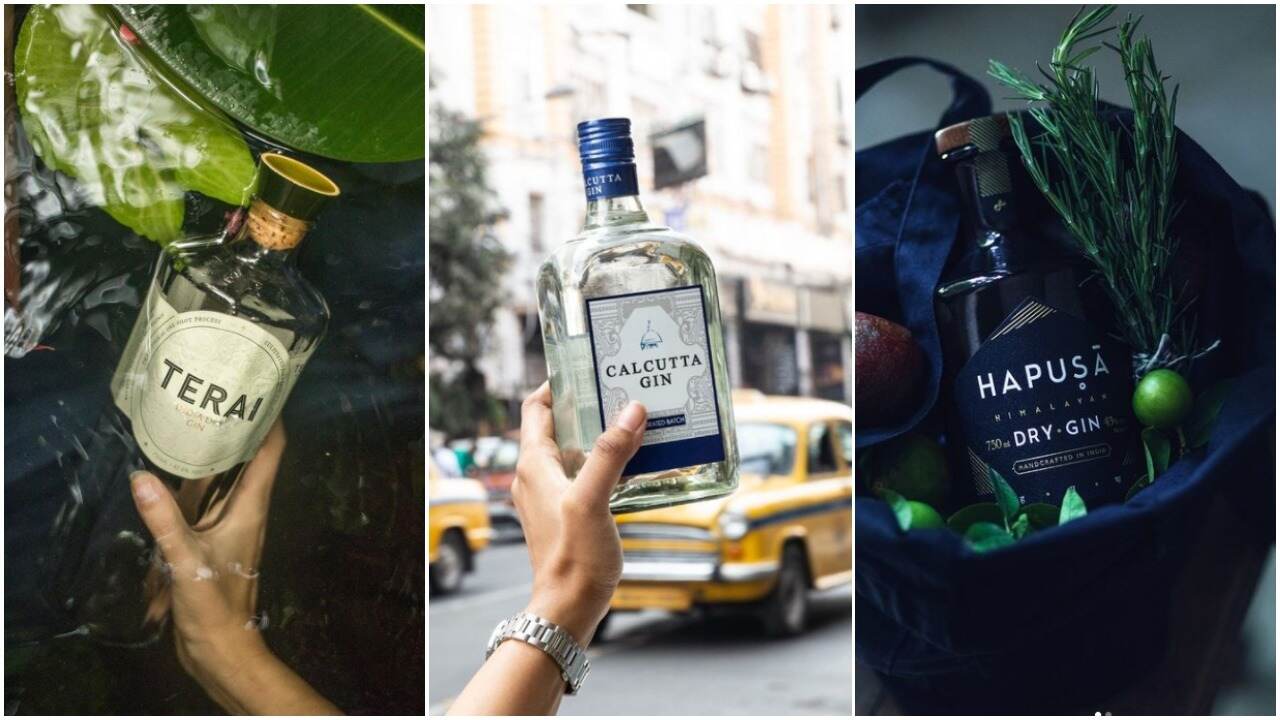What emerged as a medicinal liquor in Europe, is now a popular beverage consumed widely across the world. Gin, a distilled alcoholic drink, which has the flavours of juniper berries and other aromatic botanical ingredients, is on the rise in the Indian alcohol scene. Greater Than Gin, by Nao Spirits, which launched in 2017, paved the way for a mushrooming market of homegrown gin brands like Stranger & Sons, Hapusa, Terai, Samsara, Jaisalmer and Pumori, as well as a couple of region-specific brands like Tamras, Sector and Tickle in Goa.
My Kolkata interacts with Anand Virmani and Aparajita Ninan of Nao Spirits, the company behind Greater Than Gin and Hapusa, on their journey, the Kolkata market and exploring a new format of festivals revolving around alcohol beverages.

L-R: Anand Virmani and Aparajita Ninan of Nao Spirits, the company behind Greater Than Gin and Hapusa
What made you realise there was a need to step into the homegrown gin market in India?
We were ready to start an enterprise like this for a long time. In the time-frame of 2010-2011, Indian consumers were not fond of gin and did not look at it too kindly. I experienced it when I managed Hendrick’s Gin as a client, where the people invited for events and launches would instinctively ask for a whisky, beer, or wine over gin.
There were also a lot of misconceptions prevailing about gin being a drink for people over 60 or an afternoon drink, and this contributed to it not being a popular choice.
However in 2015, when we were operating a place called Perch (Delhi), a lot of youngsters were opting for gin, gin & tonic, and asking for other gin drinks. The story was changing and people were now interested in gin. And the fact that India did not have a craft gin of its own prompted and solidified our resolve to start Greater Than Gin.
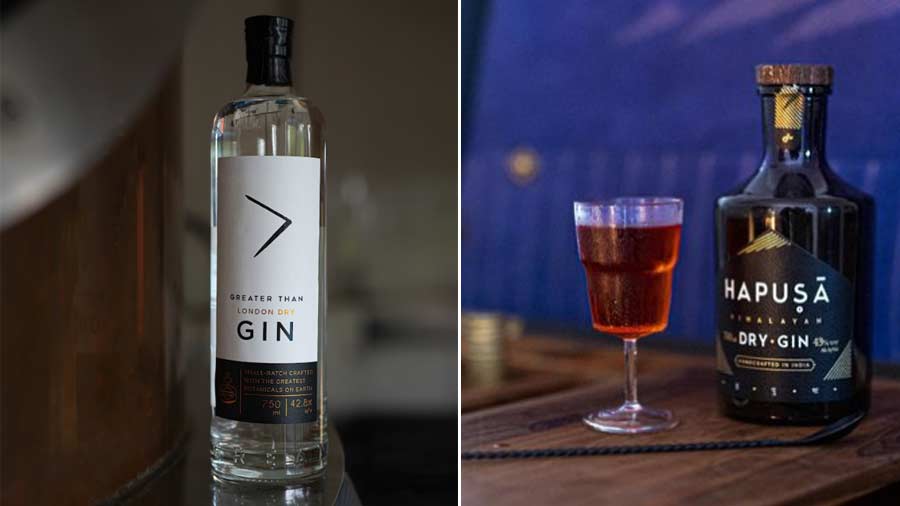
Greater Than Gin’s flavours tend to be clean and citrusy with a bit of a sweet spice that comes from the fennel, ginger, and other botanicals in the mix, while (right) Hapusa is much more bold and earthy, with a delicate spice and a wine flower note
How’s the market for your brands – Hapusa and Greater Than Gin – in eastern India?
In eastern India, it’s actually been great. It has been surprising how well Greater Than has been doing in West Bengal, Assam, Meghalaya and Arunachal Pradesh. Across the board, distributors were really adamant about us putting out 180ml bottles as opposed to the 750ml bottles, as the sales may have not gone as well. The knowledge behind gin has not really been where the rest of the world is right now and they wanted us to ease into the market. That said, the 750ml has done really well in all these markets and all the growth that we have seen so far has come from the 750ml bottle. It is only now, we are thinking about introducing a 180ml bottle to increase accessibility.
Hapusa is still something we are working on in the eastern market. We do have Hapusa in Kolkata, but we have not really done a lot to promote it yet. It tends to be a brand that we have been a lot quieter around it and that has been the vibe we have gone for. Having said that, we have got a couple of really good accounts and some really interesting food-centric events around Hapusa, including two done in Kolkata, and a lot more can be expected this year.
At present, we are also looking at registering Hapusa in Assam, Guwahati and maybe even Arunachal Pradesh.
Why the name Greater Than Gin?Our goal was to create something that was ‘greater than’ anything out there. We were starting out at a time when there was no craft gin in India, there were only cold compounded mass-produced gins and imported ones that were pricey and generic and not better or even as good as our craft gin. The name Greater Than encapsulated our offerings to the market.
What goes into creating quality homegrown gin consistently?
Because we were the first to do this in India, access to the correct equipment, botanicals, and knowledgeable people were not readily available. So, we had to do a lot of it from scratch, build our own way and bring in the right people with the requisite knowledge. We brought in Anne Brock, a master distiller now at Bombay Sapphire, who taught us everything about making gin. That was essential in creating a quality product.
How is Hapusa different from Greater than Gin?
Hapusa is made with Himalayan Juniper, which is foraged instead of grown for the purpose of making gin. Whereas, Greater Than Gin is made primarily from berries that are sourced from Macedonia, a juniper that is used specifically for making gin. Apart from that, the botanical mixes used are completely different. Hapusa tends to use only the ones sourced from the regions like fresh turmeric, dried ginger, cardamom, and dried and raw mango from Uttarakhand, which adds a really nice acidity and savouriness to the gin, and gondhoraj which is quite popular in West Bengal.
Greater Than however uses botanicals like orange peels sourced from Spain, Angelica root sourced from Germany, beyond that we use botanicals like fennel, dried ginger, and chamomile that we find in India. The idea was to create a classic gin, something that can be used by bartenders and consumers alike for their gin and tonics. Whereas, Hapusa has a unique flavour profile with rich characteristics that make it an excellent drink experience to have neat or on the rocks.

The newly launched Broken Bat Ginsky, which has notes of aged leather and freshly toasted wood, with hints of almost-ripe mangoes and sweet juniper spice
What has the restaurant and bar consumption been like for both in Kolkata?
Restaurant and bar consumption has been great, more so for Greater Than, because it is positioned as a classic brand. Retail is strong on both ends, especially in Kolkata which is the one place in the entire country that allows Swiggy and other platforms to deliver alcohol to homes via the app. That makes it really interesting because of the improved accessibility and the fact that people are able to reach out to their favourite brands much more easily. Additionally, at-home consumption tends to be a huge driving factor in Kolkata.
How do you like your glass of gin?
Anand: My gin preferences depend a lot on the time of day, weather, and atmosphere. During the day, especially if it’s a warm day, I like my gin and tonic with a slice of lime. If it is Hapusa, I usually garnish it with a wedge of orange, squeeze and then drop it in. In the evening, I might throw in a rose petal instead. I think that the fun lies in the fact that you can really use the gin and tonic as a base and then customise it with garnishes of your preference. But in the evening more often than not, I tend to prefer something like a magnolia.
A secret tip to have it differently?
Aparajita: For Hapusa, I like to keep it refrigerated, pour about 40ml into a glass, and just have it neat. It is lovely because it is chilled and also has a lovely, thick, and velvety texture to it because of the almond.
When it comes to gin and tonic, people usually talk about garnishes. My secret tip, specifically for Greater Than, for a gin and tonic is experimenting with modifiers. One of my favourite modifiers and ways to make a gin and tonic is to measure 45ml of gin, and 15ml of Campari, put it over ice, and garnish with a wedge or slice of orange. It has a beautiful flavour and is called a Milanese Gin. The other modifier I love to use is cold brew coffee instead of the Campari, it is called a No String Gin and Tonic. I would highly recommend these two variations. They are simple to make but delicious.
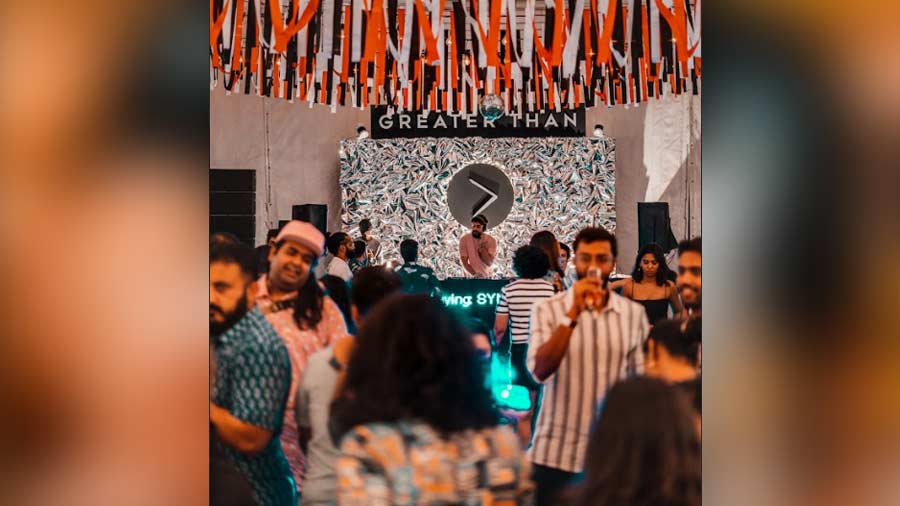
At the Bars from Far festival
Could you shed some light on the Bars from Far festival?
Bars From Far has been really exciting, we just wrapped it up on April 15 in Bengaluru. We got tired of seeing the same format over and over again where it was a festival where a lot of brands came in and set up their bars. We felt that the right things and people were not being spotlighted. Our idea was to change that.
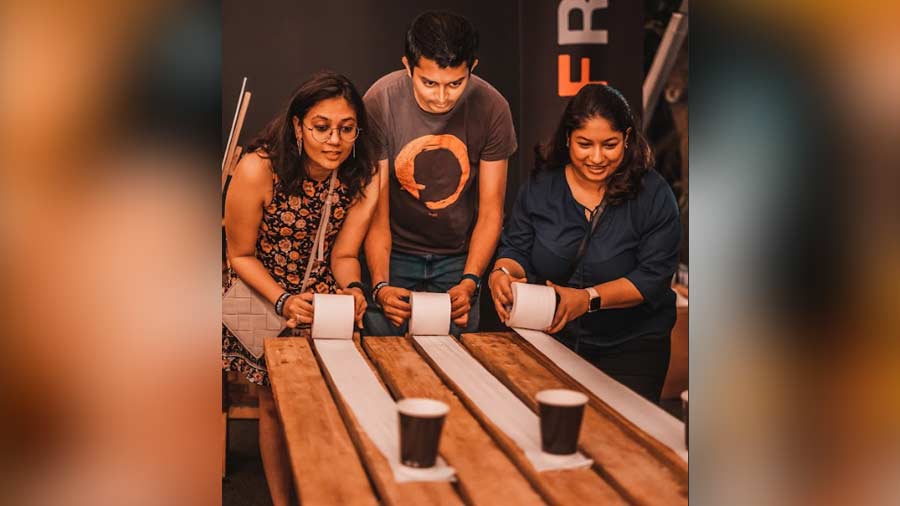
Visitors playing games at the Bars from Far festival
One thing we love to do when we travel is to try different bars that we have heard of, and so we thought it would be great to get many bars from across the country to come to one location for people to be able to have new experiences that are not available to them. The one we did in Bengaluru was hosted at The Royal Orchid which turned out to be a fantastic place to host it. We selected seven bars from seven different cities across India to spotlight some fantastic people, bars, and bartenders who make really good cocktails. Each bar was given free reign to create three different cocktails, two with Greater Than and one with the limited edition Broken Bat which is an aged gin. So you could walk up to PCO from Delhi and try a drink from there or HIdeaway…the choice was plentiful in terms of getting the best bars from each city.
We saw that people were excited to try out these bars and bars were equally happy to be hosted by us and present their products and get recognition. We had about 1,000 people and sold over 1,000 drinks per day. I think this format really proved itself this time around, and we are really excited to take it to Delhi, Bombay, Pune, Goa, and further.

Anand Virmani at the distillery
What are your plans going forward?
Our plan is to do more of what we have been doing already and try to do it even better. There is always room for improvement and we are trying to understand our processes to streamline them better. I think that in itself has been keeping us very busy. We are available now in 13 different states in India and 16 countries across the world. Our priority right now is to strengthen our key markets and make sure we drive home operational improvements.



